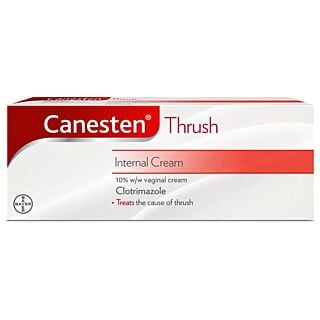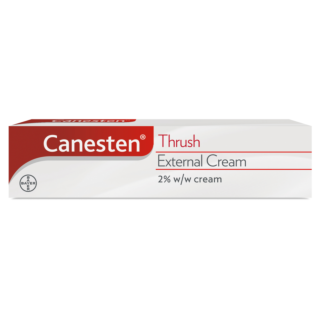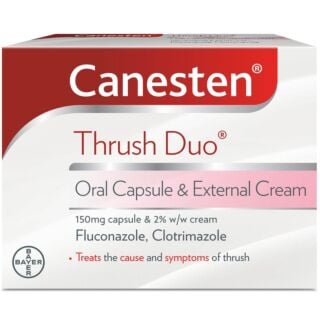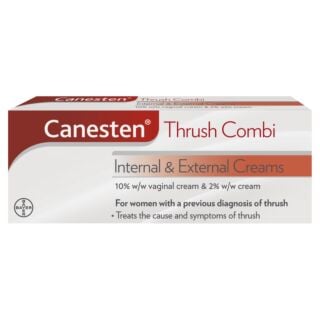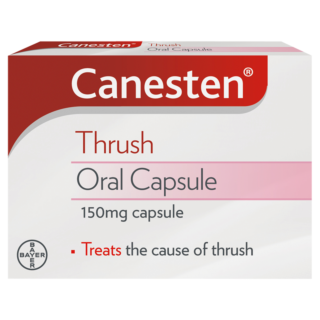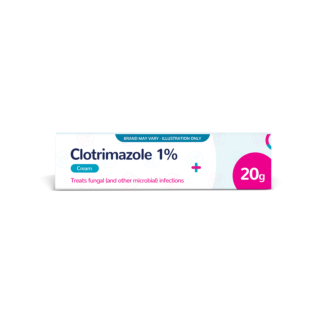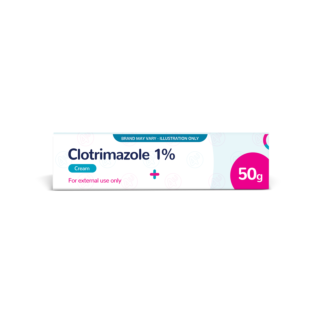Everything you need to know about thrush in men

If things are feeling a little itchy in your private area, then it might be something a little more serious than just the everyday need to scratch.
You could be suffering from male thrush, which can leave you feeling itchy, uncomfortable, and more than a little irritated.
Don’t let thrush get you down, we’ve written this guide to tell you all you need to know about male thrush and how you can get rid of it.
What is thrush?
Thrush, which you might also know as a yeast infection, is what happens when the natural fungi, or yeast, that live on your skin are given the right conditions to grow and thrive.
This leaves you suffering from a nasty, uncomfortable infection that many people suffer with at one point in their lifetime.
If you want to learn more about what makes thrush the barrel of laughs it truly is, check out our guide on what makes thrush thrush, and then come right back here to learn more about what thrush means for men.
Don’t worry, I’ll be sat here enjoying a nice cup of tea and a biscuit until you get back.
Can men get thrush?
If you’re a man who doesn’t know very much about thrush, then you might be feeling a little confused right now. Can men even get thrush? Isn’t it a vaginal infection?
Well, I’m sorry my male friends, but when it comes to thrush you can suffer just as much as the ladies, as this infection doesn’t discriminate by gender.
Yes, men can get thrush and not just around their penis (which is the type of thrush we’ll be speaking about in this guide), but in other areas such as their mouth too.
How do men get thrush?
Men get thrush in the same way that women get thrush, through an imbalance in the natural bacteria in their body.
When these bacteria are given nice, warm, moist conditions in which to grow (for example, sweaty, tight-fitting underwear) they can get to be too much for your body to control, causing an infection.
Men who have a tight foreskin or a foreskin constriction may find themselves to be more vulnerable to thrush, as it can make your penis more difficult to clean.
This gives the yeast that causes thrush the opportunity to multiply beneath the foreskin, causing an infection.
Although thrush is not a sexually transmitted infection (STI), it can sometimes be caught if you have sex with a partner who has thrush without wearing a condom.

Thrush symptoms in men
When thrush infects your penis, it has some pretty recognisable symptoms, which are similar to the ones that women experience.
Some of the most common symptoms of male thrush include:
- Reddening of the skin, especially around the head of the penis and under the foreskin
- Irritation
- An itching or burning sensation, especially when you pee or have sex
- A white, cottage cheese-like discharge
- Difficulty pulling back the foreskin
- An unpleasant smell
Although these symptoms are a pretty clear sign that you’re experiencing thrush, sometimes you may experience no symptoms at all from your infection.
If you think you may have thrush, or just know that something isn’t quite right, make an appointment to see your doctor.
They’ll be able to give you the correct diagnosis and recommend the best course of treatment for you.
Thrush treatment for men
You’ll be glad to know that treating thrush is really quite simple, and all you’ll need is a tablet and maybe a little cream too.
These treatments are both available over the counter at your pharmacist, but you shouldn’t purchase either of them without chatting to a medical professional about your condition first.
Let’s take a look at both types of treatment and how they work…
Tablets
One of the most popular ways to treat thrush of many different kinds are fluconazole tablets.
Fluconazole is the active ingredient in many different thrush tablets, such as Canesten, and it works as an antifungal agent.
This means that it helps to destroy the yeast that causes thrush, clearing up the infection from the inside out.
You’ll probably only need to take one fluconazole tablet to clear up your thrush, but make sure to speak to your doctor or pharmacist about whether you should take one of these tablets, and whether you'll need to take more in the future.
Cream
The other way to treat thrush is by using antifungal cream.
There are a few different types of cream that you can use to treat thrush, but one of the most popular kinds used to treat genital thrush contains the active ingredient clotrimazole.
You can apply this to your penis to help to reduce the itching and irritation you’re feeling in the area, making you feel more comfortable as your infection clears up.
Can men use Canesten?
Yes, men can use some Canesten products, as they contain the active ingredients needed to treat thrush in both men and women.
For example, Canesten External Cream contains clotrimazole, which can be used on the penis and the outer area of the vagina to treat thrush and relieve its symptoms.
However, there are some Canesten products that aren't suitable for men, specifically the internal cream and pessaries.
These treatments are designed to be used inside the vagina, so naturally, they're not suitable for men.
If you're ever unsure about your treatment, make sure to speak to your doctor or pharmacist as soon as possible, they'll be able to point you in the right direction.
How long does male thrush take to clear up?
With proper treatment, male thrush will normally clear up within 14 days, so you won’t have to wait long to find relief from that itching!
If you’ve finished your treatment and your thrush still hasn’t cleared up within that time, go back to your doctor so they can give you some more advice on what to do next.
You should also do this if you have thrush that comes back more than twice in six months, as you might need to think about what changes you can make that might stop that thrush from coming back and your doctor will be able to point you in the right direction.

Home remedies for thrush
There aren’t any reliable home remedies for thrush, but there are a few things you can do at home to help to prevent thrush.
For starters, you’re going to want to practice good personal hygiene, as this is a common cause of male thrush.
Make sure you wash your penis regularly, using an emollient such as E45 cream instead of soaps or shower gels, which can cause irritation.
Wear clean, cotton underwear every day and make sure that gives you room to breathe, so your penis can stay as cool and dry as possible.
Finally, make sure you use a condom if you plan to have sex, this will help to prevent you from passing thrush to your partner and will also help to keep them from passing it back to you.

How are you feeling now guys? More comfortable already? Good!
Remember, if things aren’t feeling quite right down there, have a chat with your doctor as soon as possible. You don’t want to leave anything up to chance, right?
Sure, you might feel a little embarrassed, but it’s nothing your doctor won’t have seen before, so go ahead and make that appointment. Trust me, you’ll be feeling better in no time!

